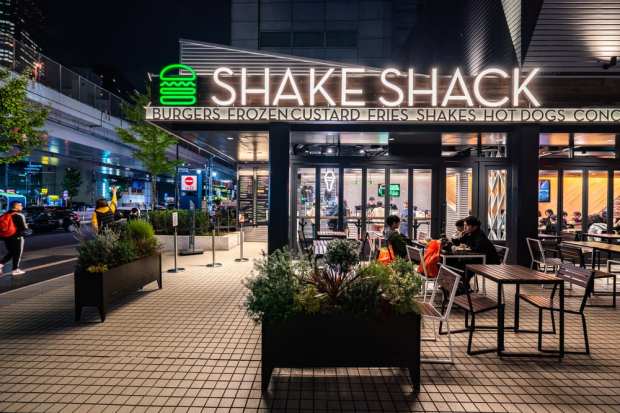Lower Sales Numbers Send Shake Shack Shares Down 17 Pct

After Shake Shack Inc. registered less-than-expected comparable sales and set disappointing targets for this year, the quick-service restaurant’s stock dropped on Tuesday (Feb. 25) as delivery growth also slowed during a shift to a sole partnership with Grubhub. Shares fell in their largest intraday drop as of Nov. 5, with the stock plunging by as much as 17 percent, Bloomberg reported.
The stock had been up 24 percent so far this year after a 31 percent increase for the entirety of last year. SunTrust analyst Jake Bartlett wrote per the report, “Results and guidance reinforced our concerns around Shake Shack’s transition to a single delivery partner and increased cannibalization, which drove our recent downgrade.” Other analysts are also still cautious about the move.
The firm also attributed cannibalization to the sales shortfall. The topic has been a worry for investors for some time, and Bartlett foresees it still being a focus. In the fourth quarter, same-store sales declined 3.6 percent year-over-year. The firm, for its part, looks to open 40 to 42 company-owned stores this year. And 20 to 25 net new licensed stores are also forecasted to open as well.
In the third quarter of last year, same-store sales rose only 2 percent for Shake Shack, disappointing investors. The chain’s revenue increased some 32 percent year over year, however, reaching nearly $159 million, and attaining analyst expectations.
In August, news surfaced that the quick-service burger chain had entered into an integrated partnership with Grubhub to make its food more accessible to diners. The online and mobile food ordering and delivery marketplace, in addition to its Seamless brand was to be Shake Shack’s national delivery partner, with menu syncing, in addition to direct-to-POS integration.
Randy Garutti, Shake Shack CEO, said at the time in the announcement, “Shake Shack is experiencing incredible growth. Now more than ever, we’re doubling down on our commitment to be an accessible, omnichannel business.”
Pickups were to be timed to the moment an order is ready to help ensure faster delivery, enhanced guest experience and fresher food.
